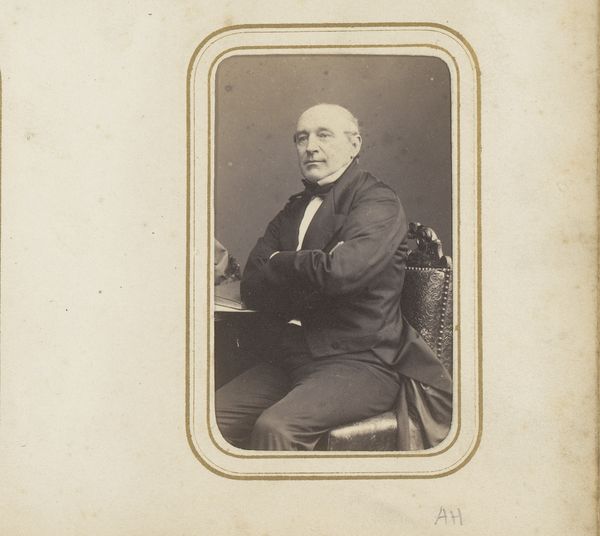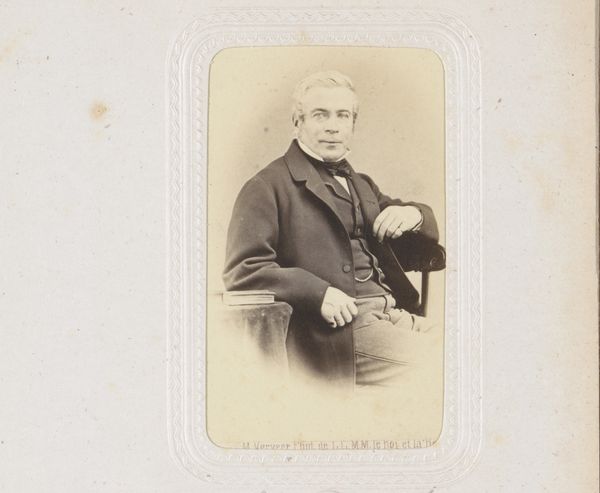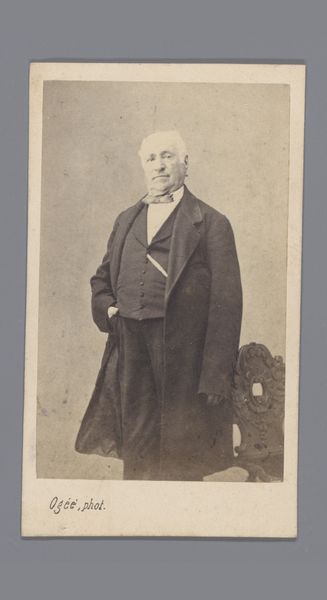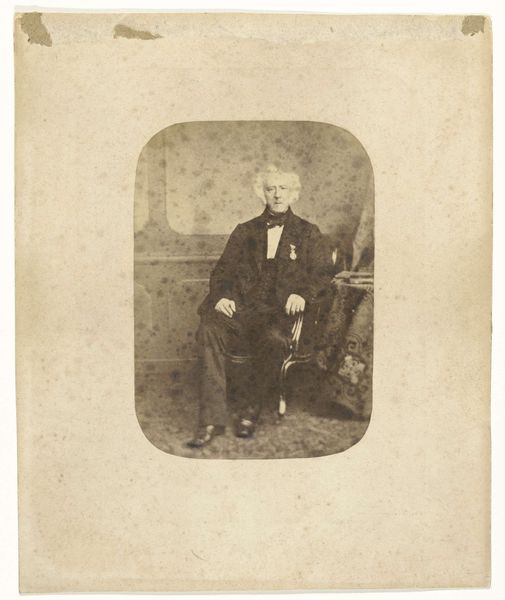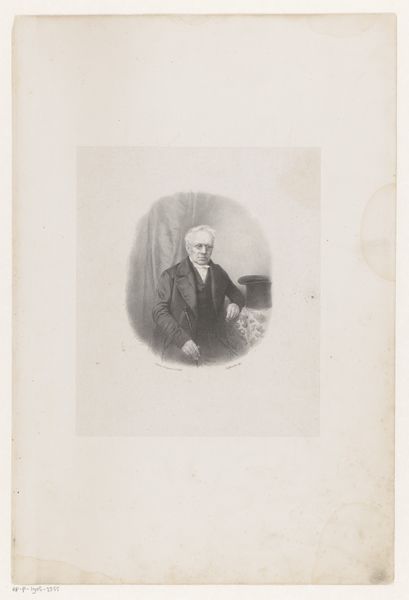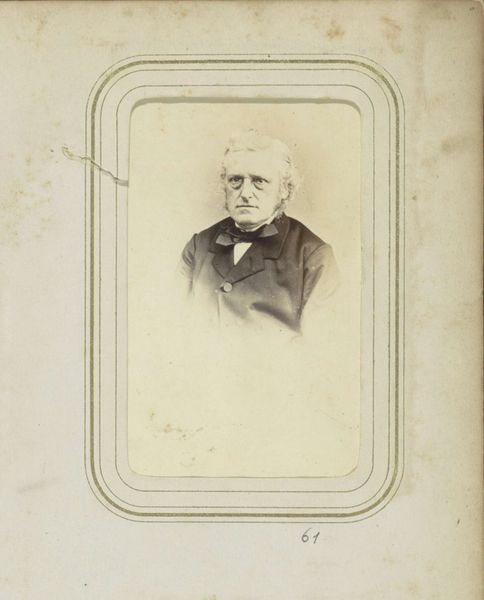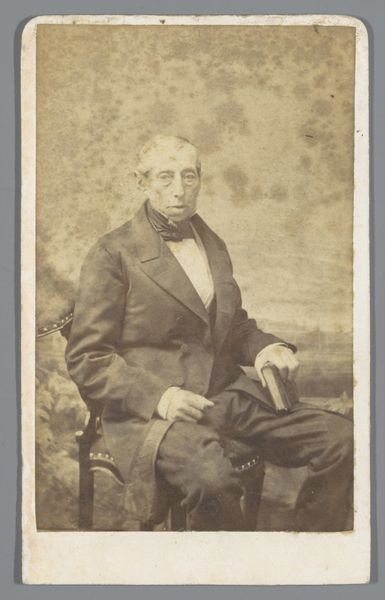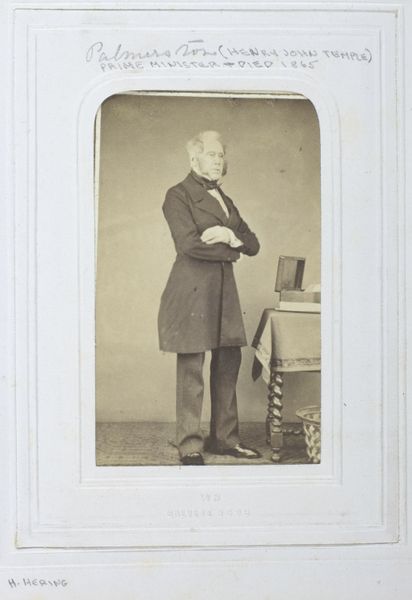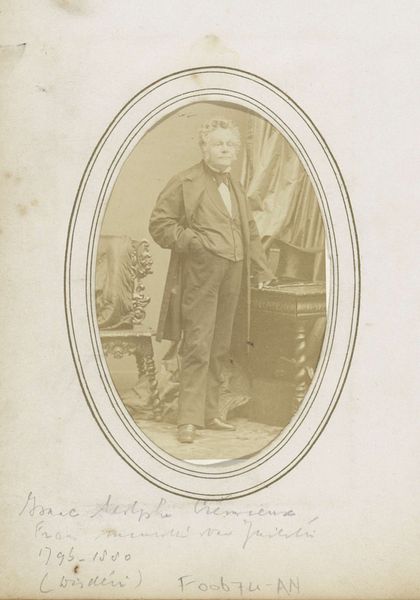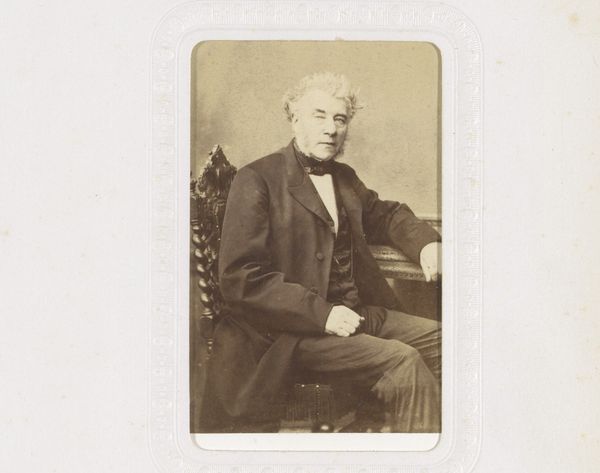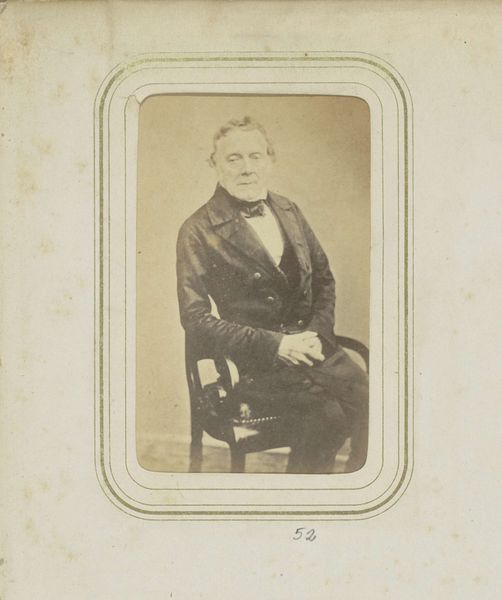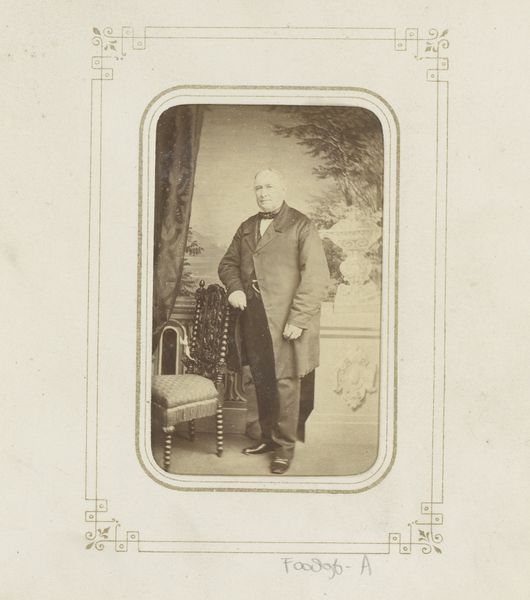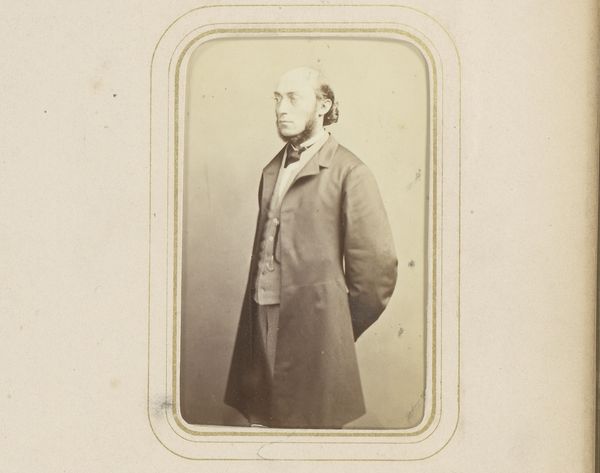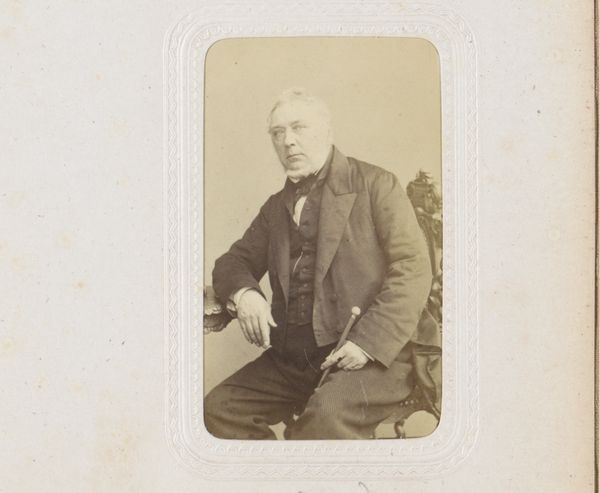
daguerreotype, photography
#
portrait
#
16_19th-century
#
daguerreotype
#
photography
#
realism
Dimensions: height 110 mm, width 95 mm
Copyright: Rijks Museum: Open Domain
Editor: Here we have *Portret van Tobias Asser*, a daguerreotype made sometime between 1845 and 1847. The figure appears solemn and poised. What stands out to you as you consider the emotional or cultural context of this portrait? Curator: I see a careful construction of identity, a desire to convey authority and respectability through the language of the era. The sitter’s formal attire, combined with the props behind him like neoclassical wall decorations, speak to the visual rhetoric that’s popular at this time, conveying virtue through an illusion of Greek and Roman idealism. This early form of photography, the daguerreotype, also speaks to truth or realness. The combined message here says, "I am a pillar of society." What do you make of his hands? Editor: The way he clasps his hands seems self-assured, but the almost pleading look on his face projects a very human aspect. It suggests a complex interiority. Curator: Indeed, a fascinating tension. The image asks us to consider what society demanded of individuals in the mid-19th century and how individuals chose to project their own sense of self, while still adhering to a traditional mode of portraiture. What memories did such formality preserve, and at what cost to genuine expression? Editor: So it's a performance as much as a likeness. Thank you! Considering the context gives me so much more to appreciate. Curator: My pleasure. The visual layers are fascinating here. It allows us to look at who we were, and who we want to be as society evolves.
Comments
No comments
Be the first to comment and join the conversation on the ultimate creative platform.
